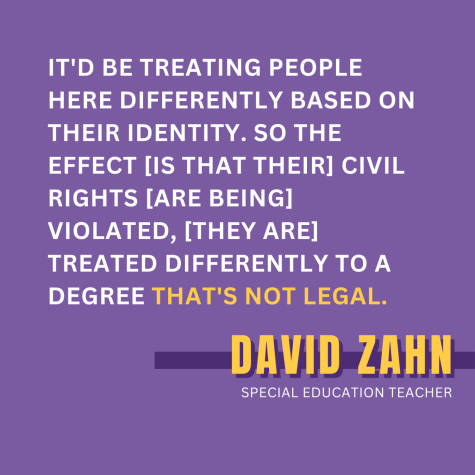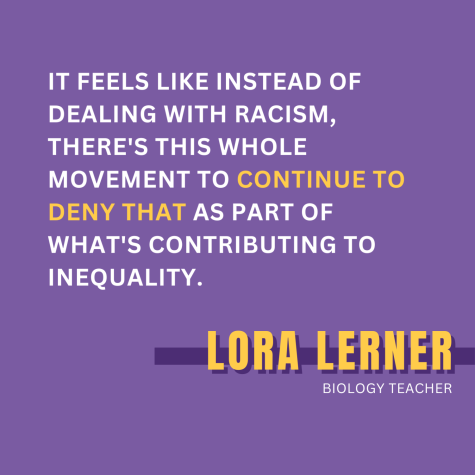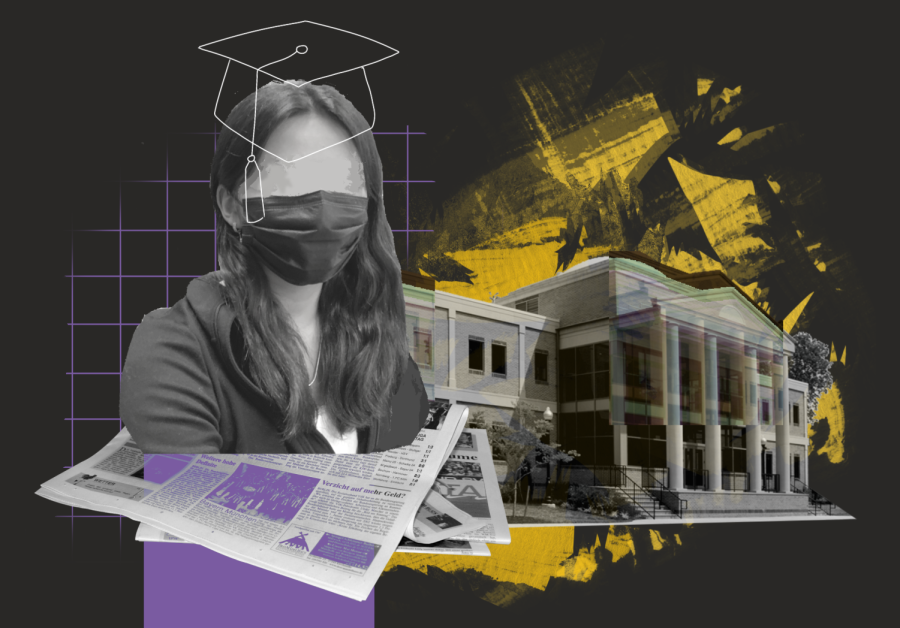Leveling the playing field
Students and staff share their opinions on affirmative action
The Supreme Court heard arguments in two cases regarding race-based admission programs on Oct. 31.
April 13, 2023
While working at Boise State University, one of special education teacher David Zahn’s roles involved examining trends in the test scores of admitted students. For Zahn, affirmative action was already a familiar concept thanks to a political science class he took in college and his own research, but he was still surprised to see it in action, especially how “the disparity [in test scores] was as much as it was” among students admitted under affirmative action policies.
After Students for Fair Admissions filed a petition, the Supreme Court reopened the discussion on affirmative action on Oct. 31, 2022. SFFA originally filed the lawsuits in 2014, accusing Harvard University and the University of North Carolina of imposing limits on the admission of Asian students, and the conservative majority of the current court raises the possibility of a decision against affirmative action before June.
Junior Alice Ross explains that her doubts about affirmative action stem from flaws in execution, as she believes it admits underprepared students to difficult colleges and fosters resentment of minority students on campus. Still, Ross feels conflicted about eliminating affirmative action completely.
“If you think about it theoretically, [affirmative action] is a very good idea,” Ross said. “The way the capitalist system is, you should have equality of opportunity and the amount of work you put into it is what you get for your outcome. But realistically, the opportunity people get is not exactly equal.”
While affirmative action has improved diversity on campuses, Zahn says it fails to bridge the achievement gap Ross mentioned. He adds that affirmative action has strayed from its initial purpose of placing high-achieving but disadvantaged students on the same level as their counterparts, potentially constituting a violation of Title VI.

“Sixty years later, [affirmative action] is still here,” Zahn said. “It serves a much larger group of people, not all the same historically disadvantaged people in the same ways. The degree to which it treats people differently [has] grown, and that’s where I think the argument is, that they might have overstepped. It’d be treating people here differently based on their identity. So the effect [is that their] civil rights [are being] violated, [they are] treated differently to a degree that’s not legal.”
California banned affirmative action in public universities in 1996 and voted against repealing the ban in 2020. At MVHS, Ross sees Asian students — who comprise over 74% of the student body — being pushed into local schools as a potential consequence of these affirmative action policies, as they have a lower chance of being admitted to private and out-of-state schools that still use affirmative action in their admissions process.
According to a survey of 150 students, 73% of MVHS students feel that race should not be considered in college admissions. Biology teacher Lora Lerner explains that “a lot of [MVHS] students feel like they are not being benefited by affirmative action,” a mindset she believes stems from other admissions processes that cater towards a limited background. One example is legacy programs, which give preferential treatment to students who have alumni in the family, which she says affirmative action helps counter.
“[With] legacy programs, it’s very hard to overcome all the different forms of advantage and disadvantage,” Lerner said. “The reality is the numbers have gradually increased for a bunch of different reasons. Would it have increased without [affirmative action]? Probably not. The systems don’t change on their own. I think it’s helped, but maybe not as much as people had hoped.”
As an alternative to race-based affirmative action, SFFA proposes class-conscious college admissions on the grounds that they improve racial diversity but are not “exclusively reserved for applicants of a particular race.” Lerner believes this is an instance of “our country [wanting] to pretend racism doesn’t exist” since class-conscious admissions would benefit students born into poverty at the expense of recognizing that race is a root cause of such inequalities.

“There’s plenty of studies that show that [when] a Black and white person [have] the same income, the Black person is still disadvantaged for a whole lot of reasons,” Lerner said. “Because when they walk down the street [or] when they walk into a job interview, people look at them differently. It feels like instead of dealing with racism, there’s this whole movement to continue to deny that as part of what’s contributing to inequality.”
Guidance counselor Sylvia Lam says affirmative action does not impact MVHS students’ chances of getting into college, given the adequate college counseling resources at school. However, she stresses providing other schools with equal access to even out the playing field.
“What’s important is really to improve access to [underprivileged] communities,” Lam said. “When you improve access to those communities, and they get those services that they need to prepare them for college admissions, then I feel like that closes that equity gap.”
To Zahn, affirmative action is not the only way forward. He suggests a Supreme Court decision ruling against affirmative action could encourage increased investment in schools to benefit disadvantaged students — even pushing all students to aim for the same achievement level could be more effective than affirmative action in eliminating the achievement gap. Ross agrees that education itself needs to be made more equitable for children in lower-income families, pointing out how time can be a valuable resource for students who might need to work full-time outside of school to support their families.
“After school programs [could be set up] that are easily accessible with good hours, or student tutoring at school, or homework and assignments for school [could be made] flexible,” Ross said. “[There should be] less emphasis on homework and more emphasis on understanding concepts, so that it’s less [out of school work time] that people might need to do other things.”

Lerner adds that college decisions are ultimately an accumulation of factors like poverty and access to healthcare that affect students from birth. While she says a Supreme Court decision against affirmative action is inevitable, she remains optimistic that equitable education will become a possibility in the future, reflecting on programs like California’s free lunch program as evidence of the progress that has already been made.
“Things are better now than they were 50 years ago, and I hope 50 years from now, it’s [even] better,” Lerner said. “Sometimes societies do take steps back and steps forward, so it is a little bit hard to predict. What we’re seeing is that as some parts of society talk about [inequality], you get more pushback, so you [may] have to go through that pushback [in order] to take another step forward. But I don’t think it’s [going to] be next year or the year after. It’s [going to] take us a while.”


















